

Benjamin S. Valle
email: calmansys@yahoo.com
Hand and Power Tools Safety
4 Basic Safe Work Practices
• Select the right tool for the job.
• Use tools properly and safely.
• Keep tools in good condition.
• Store tools in safe place.


Vise Grip used to turn valve Valve spindle wrench is the correct tool
Use the Right Tool

Wrong Wrench is not snug and parallel with the nut and could slip.
Use Tools Correctly and Safely

Worn insulation could cause electric shock.
Keep Tools in Good Condition


Store Tools in a Safe Place
Hand Tools Safety

What are the hazards of Hand Tools?

The greatest hazards posed by hand tools results from misuse and improper maintenance.

Pliers use to turn valve spindle of Acetylene tank
Identifying Potential Hazards and Causes – Exercise 1
Situation: Plier use to turn valve spindle of Acetylene. Potential Hazards: Pliers might slip – damaging the valve spindle or hand might hit obstructions. Cause: Wrong Tool for the Job
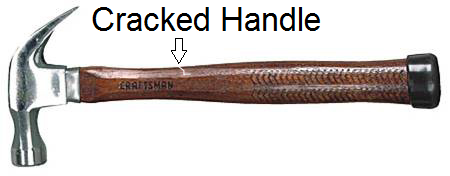
Claw Hammer
Identifying Potential Hazards and Causes – Exercise 2
Situation:
Wooden handle of hammer is loose, splintered, or cracked.
Potential Hazards
Head of hammer may fly off and strike user and other employees.
Cause: Improper maintenance
Jaws of wrench are sprung
Wrench
Identifying Potential Hazards and Causes – Exercise 3
Situation:
Jaws of wrench are sprung.
Potential Hazards
Wrench might slip and cause the user to go off balanced or sustain cuts.
Cause: Improper maintenance
< Chisel with Mushroomed Head
Identifying Potential Hazards and Causes – Exercise 4
Situation:
Chisel with mushroomed heads.
Potential Hazards
Heads might shatter on impact, sending sharp fragments flying toward the user
or other employees.
Cause: Improper maintenance

Chisels
Use of Chisel


Wrong - Chisel not held firmly, could slip and Right - Grip tool firmly cause injury

Hack Saws
► Adjust and tighten saw blades.
► Install blades with teeth pointing forward.
► Use proper appropriate blade (teeth per inch)
► Apply pressure on the forward stroke only.

Hack Saw

Apply pressure on the forward stroke only.


Incorrect, blade could wobble and break. Correct, guide the end of the saw to keep it straight
Use of Hack Saw

Files
► Only use files with secure handles.
► Do not use a file as hammer or pry.
► Clamp work to be filed in a vise. Waist level.
► To file, push forward while bearing down on it. Release the pressure and
bring file back to original position.

Files




Filing with one hand will result in uneven cut Guide the end of the file to get smooth, even cut Correct Use of File

Wrenches
Type of Wrenches
► Open-End Wrenches
► Box and Socket Wrenches
► Combination
► Pipe Wrenches

Combination Wrench
Wrenches
To ensure the safe use of all wrenches, workers must always be alert for the possibility of:
1.• A wrench slipping off the fastener.
2.• A wrench breaking.
3.• A fastener turning free.
4.• A fastener breaking.

Pipe Wrenches
Pipe wrenches are used to tighten and loosen threaded pipes.
A pipe wrench is an adjustable wrench — the top jaw moves up or down — and has toothed jaws for gripping onto pipe.
Whenever you apply forward pressure on the handle, the top and bottom jaws come closer together.

When placing a pipe wrench on the pipe, maintain a small gap between the pipe
and the back of the hook jaw. Allowing the back of the hook jaw to come into
contact with the pipe reduces the gripping action of the wrench. A one-half-inch gap between the pipe and the back of the hook jaw will do.


Improper Use of Wrench: Hitting the end to increase Proper Use of Wrench torque
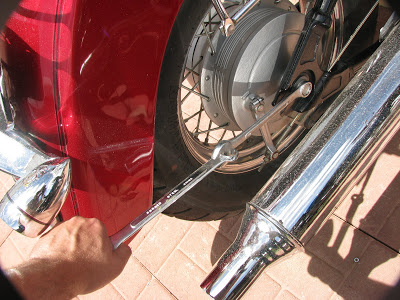
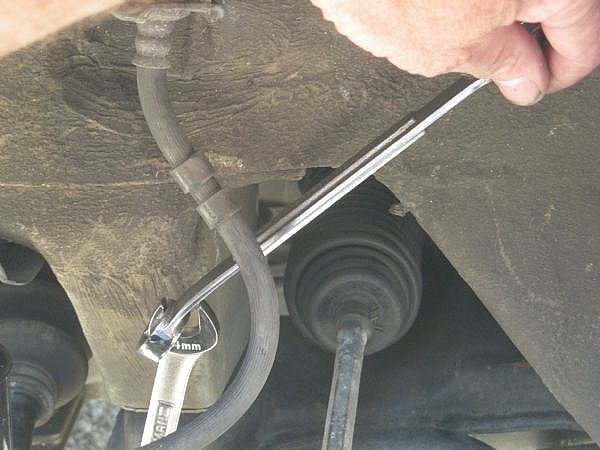
Improper use of wrench: Using an extension to increase torque
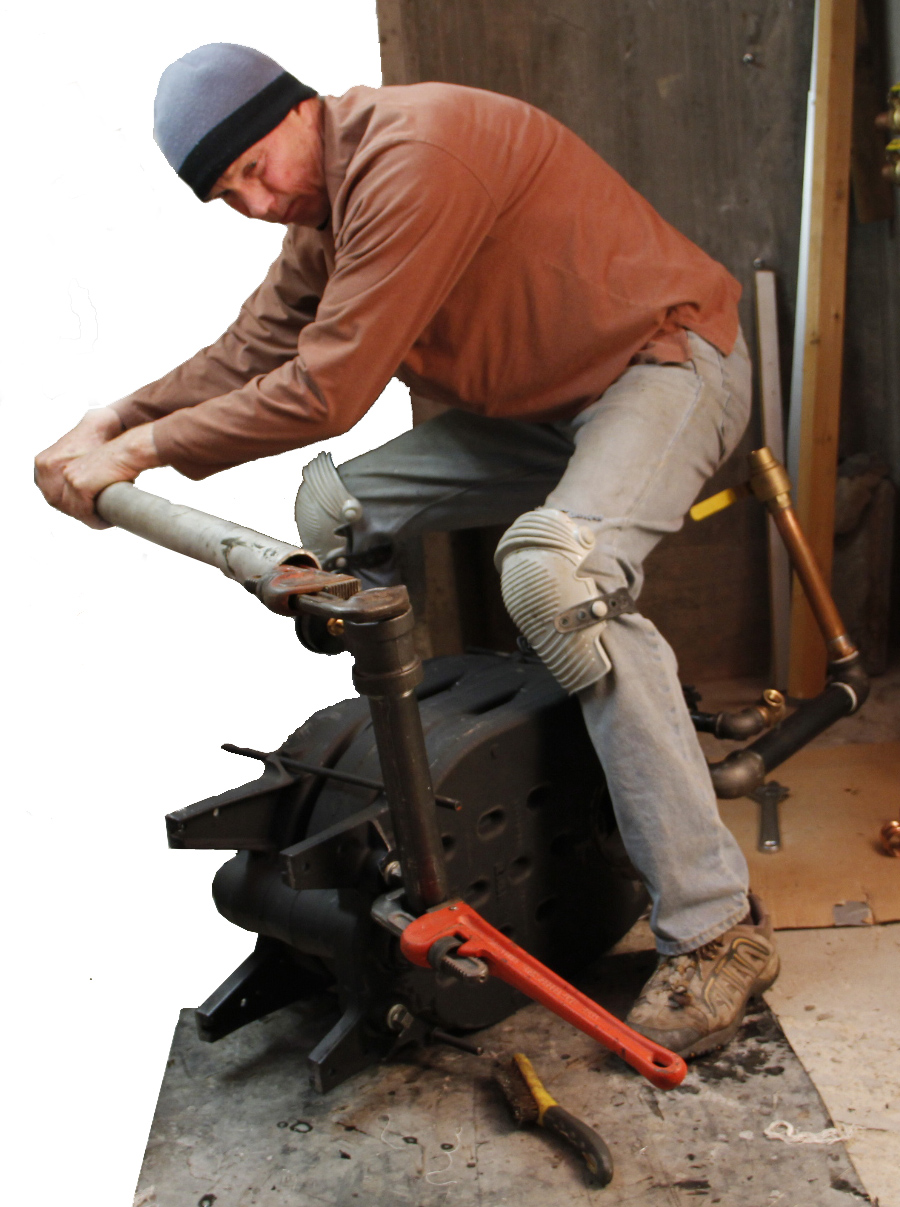
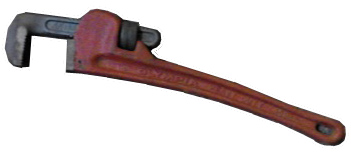
Pipe wrench bent due to use of extension or cheater pipe

Hammer or Impact Wrench
If greater torque is required, use a bigger wrench or an Impact Wrench

Adjustable Wrench
When tightening a nut with an adjustable wrench, always pull the wrench
toward you; never push the wrench away from you.
Pulling gives better leverage and balance plus, and the force would be on the fixed jaw. The movable jaw could break if subjected to pulling force.

1. Three-point contact Before you turn the wrench, make sure its jaws are snug
against the nut or bolt.
2. Tighten each time To make sure that an adjustable has as tight a hold on the
nut as possible, retighten the jaws each time you reposition them. Turn the
adjusting screw with your thumb while lightly rocking the wrench back and forth
on the fastener until it rocks no more.
3. Pull toward you Whether you're tightening a bolt or loosening it, always try
to position the sliding jaw toward you and pull the handle in that same
direction. That puts most of the pressure on the fixed jaw, which can't slip.

Screwdrivers
► Most screwdrivers are not designed to be used on electrical equipment. Use an insulated screwdriver.
► Do not hold an object in the palm of one hand and press a screwdriver into it, place it on a bench or a table.
► Never hammer with a screwdriver.
► Check for broken handles, bent blade, etc.

Screwdrivers

Defective Screwdrivers
Pliers

Long Nose Pliers
► Do not use pliers as a substitute for hammers or wrenches.
► Use insulated pliers when doing electrical work.
► Inspect insulation frequently to make certain that it is free of breaks or cracks.

Diagonal Cutting Pliers Plastic covered handles on wire-cutting pliers should be not used to cut live electrical wire. Plastic cover on handles are for comfort only and not to prevent electric shock. Always cut off electrical power before cutting.

Slip Joint Pliers

Different types of Pliers

Wrong use of Pliers

Impact Tools
Impact tools refers to a variety of hammers and related tools used to drive
items such as nails into materials by the use of manual or powered tools.
► Hammers
► Sledge hammers
► Riveting hammers
► Claw hammers
Correct use of Hammers
► Use the correct hammer for the type of work to be done.
► Have an unobstructed swing when using a hammer and watch for overhead interference.
► Check for defects before using.
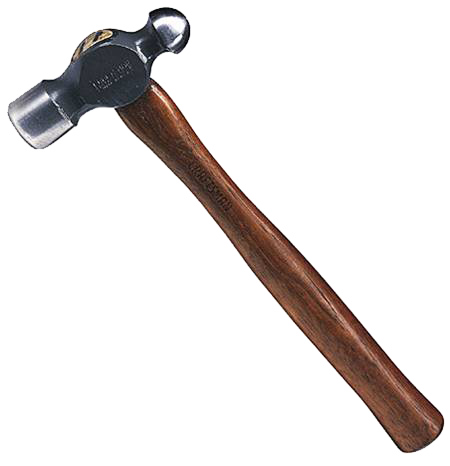
Ball Peen Hammers-used for hammering metal sheet into shape

Sledge Hammer-used for demolition

Portable Power Tools Safety
What are the Dangers of Portable Power Tools?
► Electric shock
► Particles in the eyes
► Fires
► Falls
► Ignition of flammable gases
General Precautions in the use of Portable Power Tools
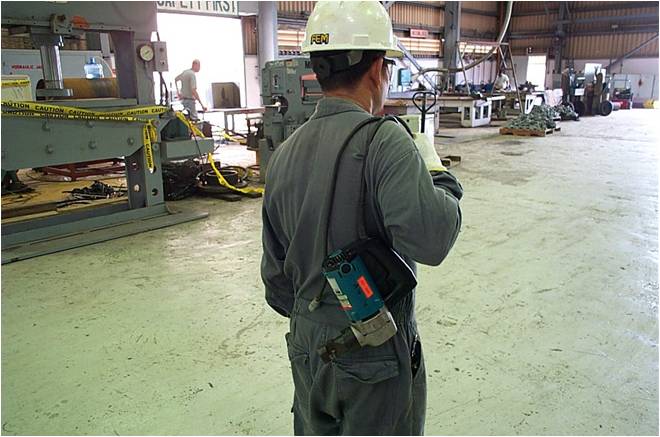

Wrong - Carry the tool by the cord Right - Carry tool by the handle Never carry a tool by the cord or hose, carry it by the handle.


Wrong - Pull the cord to disconnect from receptacle. Right - Pull it by the plug. Never yank the cord or hose to disconnect it from receptacle, pull it by the plug.


Wrong - Pull the cord to disconnect from receptacle. Right - Pull it by the plug. Keep cords and hoses away from heat, oil, and sharp edges.

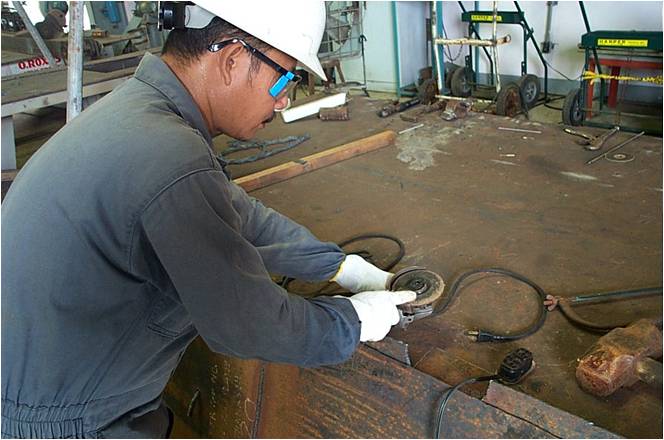
Wrong - Changing the disc while tool is plugged in Right - Unplug tool first before changing disc Disconnect tools when not using them, before servicing and cleaning and when changing accessories.
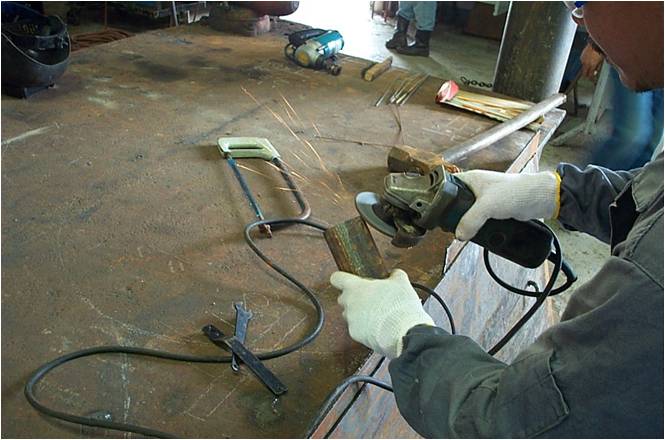
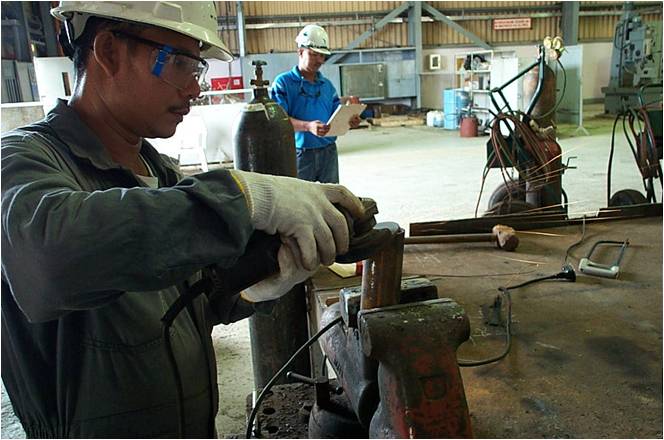
Wrong - Using the power tool with one hand Right - Use both hands to operate the tool Secure work with clamps or vise, freeing both hands to operate the tool.
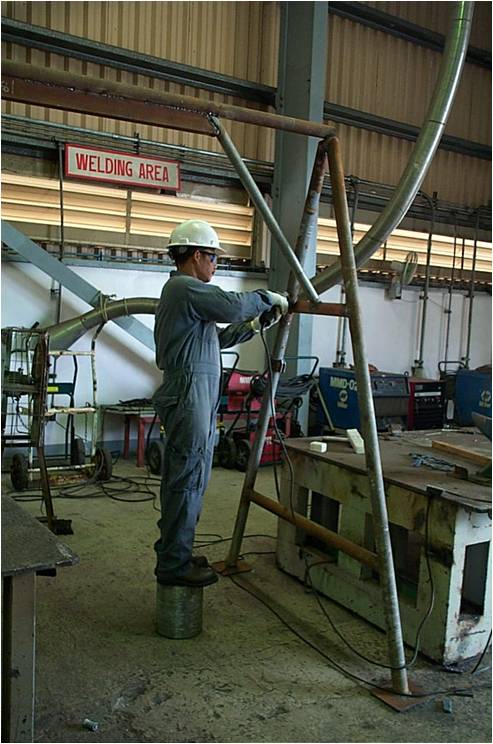
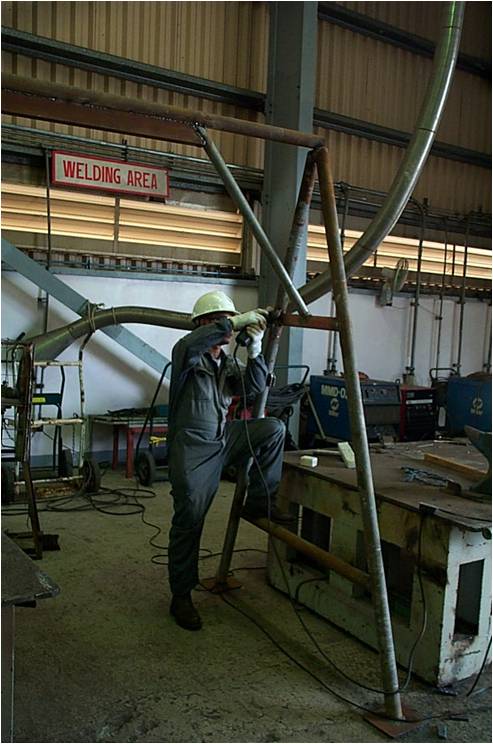
Wrong - Operating a power tool on unstable footing Right - Maintain good balance when using power tools Be sure to keep good footing and maintain good balance when operating power tools.

Maintain tools with care: keep them sharp and clean for best performance.
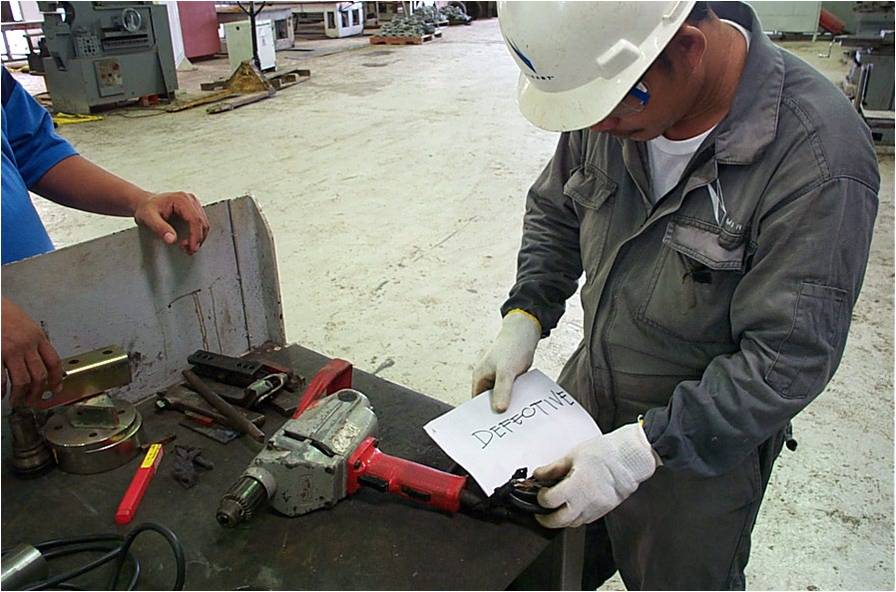
Remove all damaged portable power tools from use and tag them: ”Do Not Use”
Electric Tools
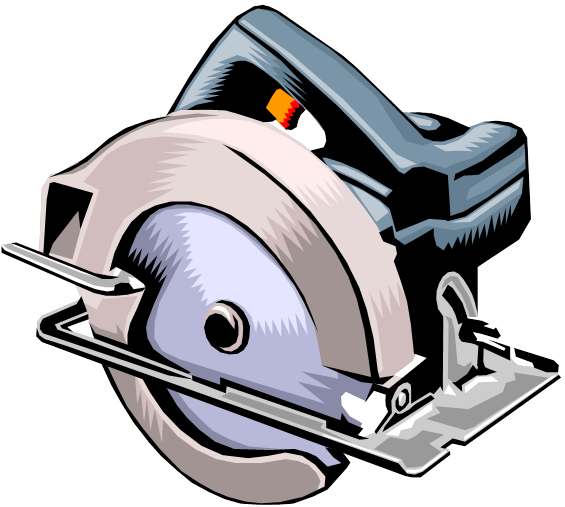
► Electric drills
► Routers
► Electric circular saws
► Disc grinders
► Soldering iron
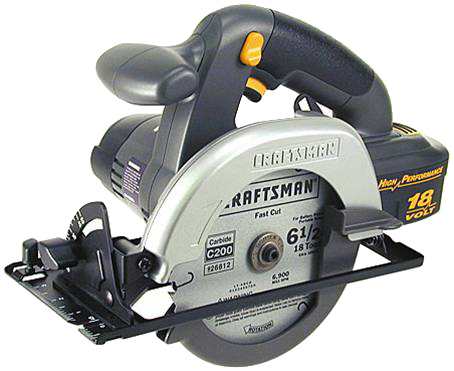
Circular Saw
Considerations When Using Electric Tools
► Double-insulated tools
► Grounding or GFCI
► Low-Voltage Isolation Transformer
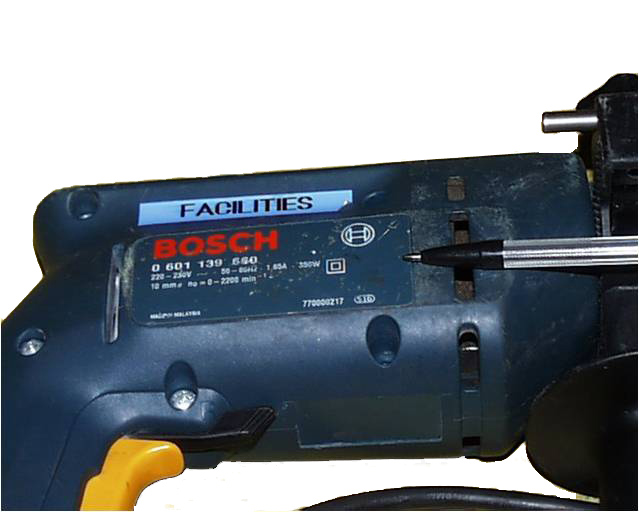
Double Insulated Tool
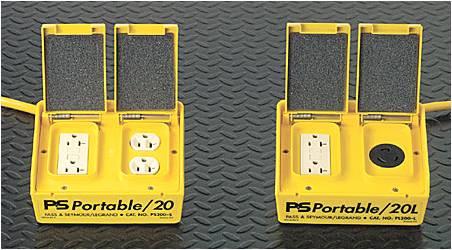
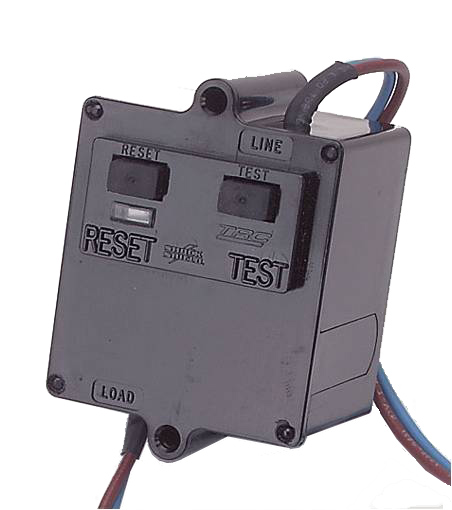
Ground Fault Circuit Interrupters

GFCI will open the circuit if 5 mA or more of current returns to the service
entrance by any path other than the intended white (grounded) conductor. If the
equipment grounding conductor is properly installed and maintained, this will
happen as soon as the faulty tool is plugged in. If by chance this grounding
conductor is not intact and of low-impedance, the GFCI may not trip out until a
person provides a path. In this case, the person will receive a shock, but the
GFCI should trip out so quickly that the shock will not be harmful.
Portable Electric Tools
 Portable Electric Drills
Portable Electric Drills
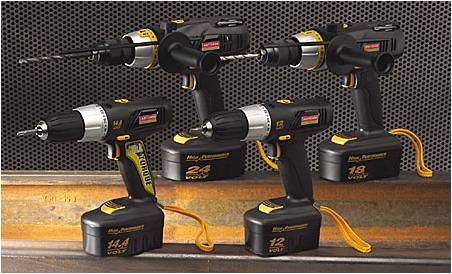
Cordless Drills
Portable Electric Tools (General Safe Practices)
► Operate electric tools within their design limit.
► Use gloves and appropriate safety footwear when using electrical tools.
► Store electric tools in a dry place when not in use.
► Do not use electric tools in damp or wet locations unless they are approved for that purpose.
► Keep work areas well-lighted when operating electric tools.
► Ensure that cords from electric tools do not present tripping hazard.
Portable Abrasive Wheel Tools

Portable abrasive grinding, cutting, polishing, and wire buffing wheels create
special problems because they may throw off flying fragments.
When using a powered grinder:
► Always use eye or face protection.
► Turn off the power when not in use.
► Never clamp a hand-held grinder in a vise.
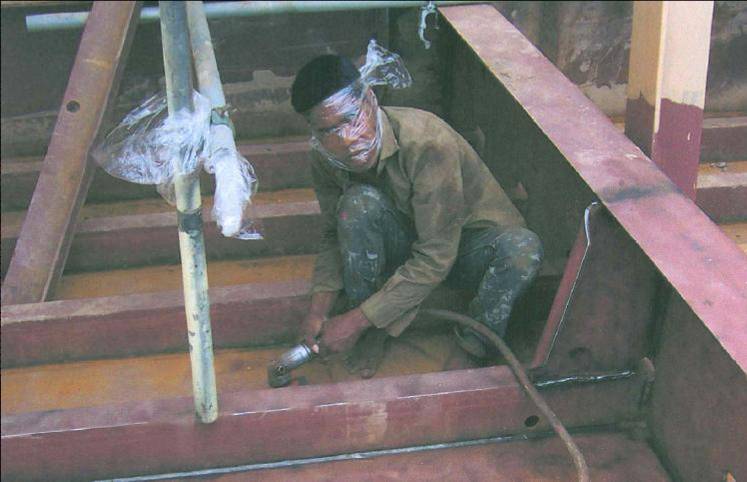
Is he wearing a face shield or does he intend to rob a bank after work?

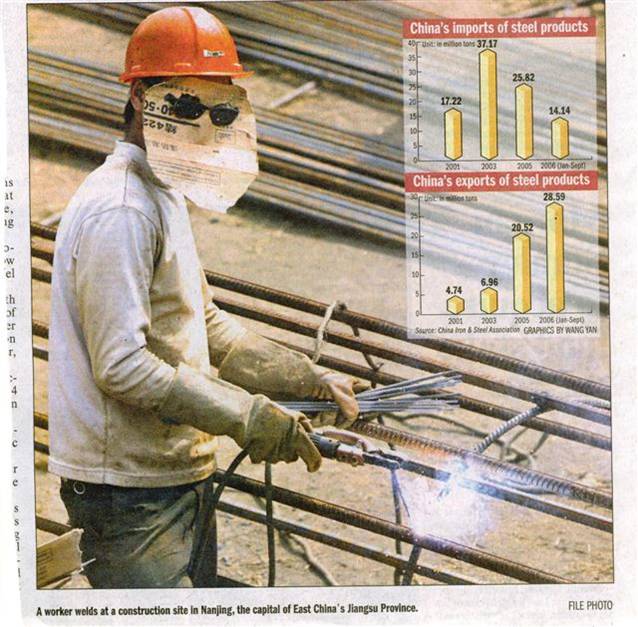
Incorrect PPE

Risky use of AC power tool = Water and Electricity, unsafe combination!
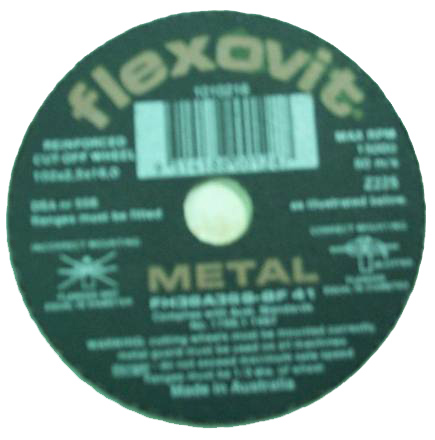
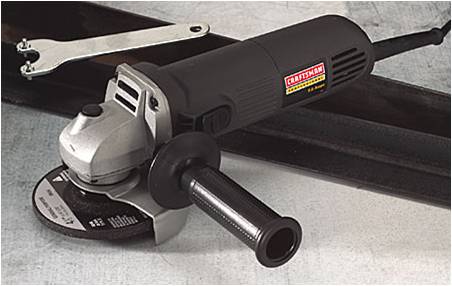
Disk RPM rating should not be lower than Grinder RPM
Portable Pneumatic Tools


Pneumatic tools are powered by compressed air and include chippers, drills, hammers and sanders.
Pneumatic (Air-Powered) Tools
► Air powered grinders
► Pneumatic impact tools
► Jackhammers
► Air-powered nailers and staplers
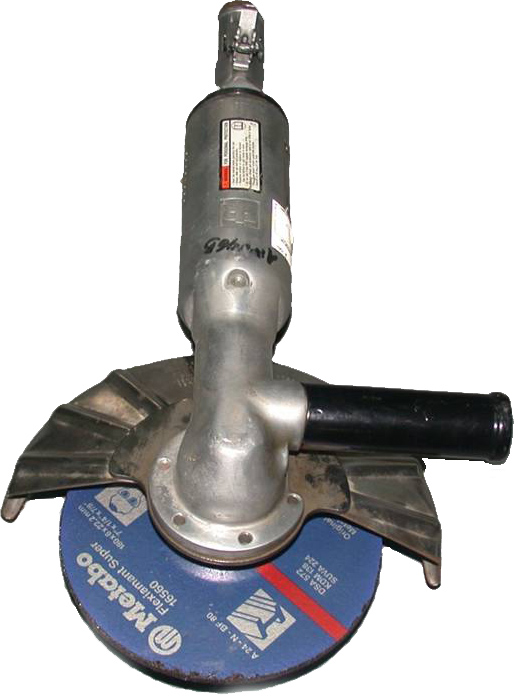
Surface Grinder
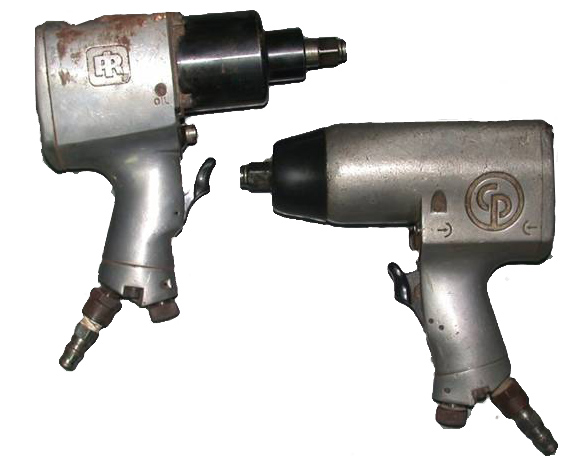
Pneumatic Drill
 Safety Precautions in the Use of Pneumatic Tools
Safety Precautions in the Use of Pneumatic Tools
► Wear head and face protection
► Use screens to protect nearby workers
► Never point air guns toward anyone
► Use appropriate hearing protection.
► For jackhammers:
- Use heavy rubber grips
- Wear safety glasses and safety shoes
- Use face shield
email: calmansys@yahoo.com